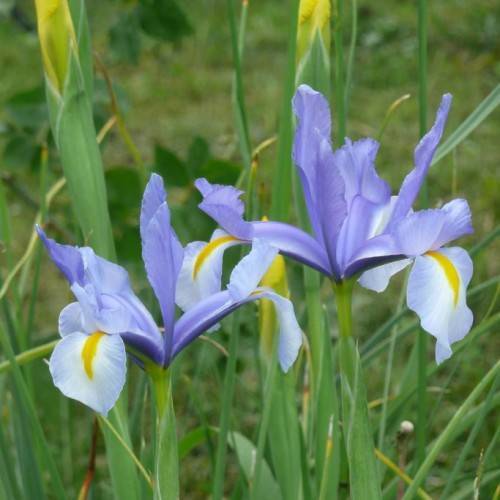
Dutch iris
Iris x hollandica
Cycle:
Annual
Watering:
Average
Hardiness Zone:
9
Flowers:
Flowers In Summer
Sun:
full sun
Soil:
Well-drained
Fruits:
Fruits In Autumn Ready In Fall
Leaf:
Yes
Growth Rate:
High
Maintenance:
Low
Indoors:
Yes
watering
Watering is an important factor to consider when growing sweet potato vine. The best practice is to water the soil deeply, but not too often. A general rule of thumb is to water the plant when the top inch or 2 of soil is dry. During the growing season, when temperatures are warm and the plant is actively growing, it may need to be watered every 7 to 10 days. As temperatures cool, and the growth slows, the plant will need less water - usually every 10 to 14 days. When the plant goes dormant in autumn and winter, it will need far less water, usually only a trickle once every month or 2.
sunlight
Sweet Potato Vines need lots of sunlight to grow and thrive - at least 6-8 hours per day. They should be grown in a sunny spot, away from buildings and trees that may cast shadows over the plant. Sweet Potato Vines should preferably be planted in the early spring, when there is plenty of sunlight, but can also be planted in warmer climates in the fall. Sweet Potato Vines can also be grown indoors near a sunny window, but this will require supplemental lighting to make up for any sunlight not available.
pruning
Sweet potato vines should be pruned regularly to encourage healthy growth and manage their size, shape, and overall appearance. Pruning should be done in late spring, before new growth begins. Depending on your desired look, you can remove up to 1-third of the oldest stems or stems that are damaged, diseased, or dead back to the soil line. Vine shoots that are growing up a trellis or garden stake should also be cut back as needed. Pruning will also encourage more compact growth and full blooms. To keep sweet potato vines from spreading too quickly, remove any blooms and pinch off any runners growing from a leaf node. This will also ensure that the main shoot of the vine produces the most vigorous secondary branches.
